Side Effects
SIDE EFFECTS: Nausea, vomiting, loss of appetite, dry/itchy skin, or skin darkening may occur. Nausea and vomiting can be severe. In some cases, drug therapy may be necessary to prevent or relieve nausea and vomiting. Not eating before your treatment may help relieve vomiting. Changes in diet such as eating several small meals or limiting activity may help lessen some of these effects. If any of these effects persist or worsen, notify your doctor or pharmacist promptly.
Mild diarrhea is also a common side effect. However, diarrhea can rarely become persistent or severe, causing very serious problems due to a loss of too much body water (dehydration). Tell your doctor right away if you develop: persistent/severe diarrhea, abdominal or stomach pain/cramping, or blood/mucus in your stool.
Temporary hair loss may occur. Normal hair growth should return after treatment has ended.
Remember that your doctor has prescribed this medication because he or she has judged that the benefit to you is greater than the risk of side effects. Many people using this medication do not have serious side effects.
Hand and foot problems sometimes occur with fluorouracil use. You can prevent or reduce these problems by protecting your hands and feet from a great deal of heat or pressure. For example, avoid taking hot baths/showers, handwashing dishes with hot water, taking long walks, and rubbing your hands/feet. Tell your doctor right away if you develop the following symptoms on your hands/feet: redness, peeling skin, blisters, pain, numbness, tingling, or swelling. If you develop these symptoms, consult your doctor for treatment options (e.g., reducing your dose or stopping fluorouracil therapy, applying ice packs to the hands/feet).
Tell your doctor right away if you have any serious side effects, including: headache, mental/mood changes (e.g., confusion), vision changes, unusual eye movements, loss of coordination, unusual tiredness.
Get medical help right away if any of these rare but very serious side effects occur: easy bruising/bleeding, blood in the urine, black/bloody stools, vomit that looks like coffee grounds, stomach/abdominal pain, chest pain, jaw/left arm pain, fast/slow/irregular heartbeat, mouth sores, sore throat, painful swallowing, heartburn, pain/redness/swelling of the arms/legs.
This medication can lower the body's ability to fight an infection. Notify your doctor promptly if you develop any signs of an infection such as fever, chills or persistent sore throat.
A very serious allergic reaction to this drug is unlikely, but get medical help right away if it occurs. Symptoms of a serious allergic reaction may include: rash, itching/swelling (especially of the face/tongue/throat), severe dizziness, trouble breathing.
Fluorouracil can commonly cause a rash that is usually not serious. However, you may not be able to tell it apart from a rare rash that could be a sign of a severe reaction. Therefore, get medical help right away if you develop a rash.
This is not a complete list of possible side effects. If you notice other effects not listed above, contact your doctor or pharmacist.
In the US -
Call your doctor for medical advice about side effects. You may report side effects to FDA at 1-800-FDA-1088 or at www.fda.gov/medwatch.
In Canada - Call your doctor for medical advice about side effects. You may report side effects to Health Canada at 1-866-234-2345.

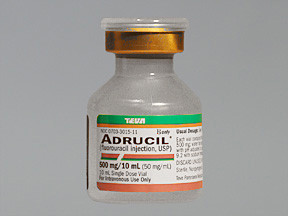
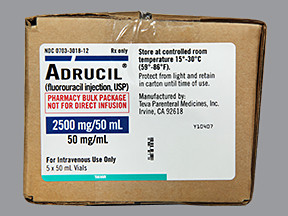
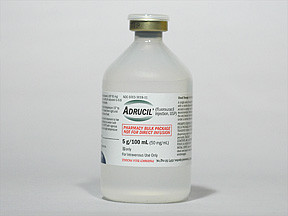
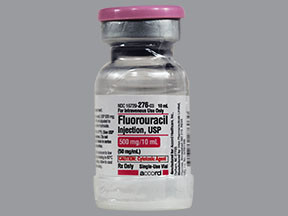

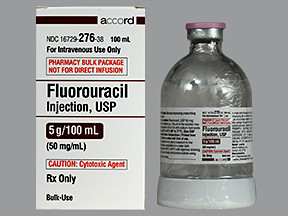
No Reviews Yet